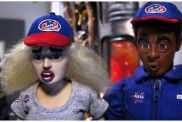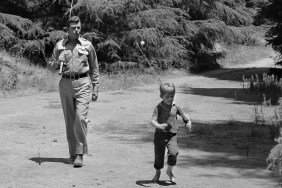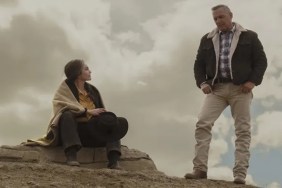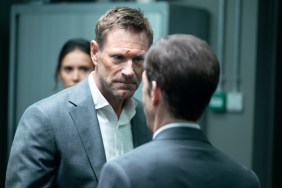Cast:
Matt Damon as George
Bryce Dallas Howard as Melanie
Cécile De France as Marie LeLay
Jenifer Lewis as Candace
Derek Jacobi as Himself
Jay Mohr as Billy
Richard Kind as Christos
Steve Schirripa as Carlo
Marthe Keller as Dr. Rousseau
Nikki Harrup as Waitress
Frankie McLaren as Marcus
Fileena Bahris as Tsunami Survivor
Monique Soltani as Cooking Student
George McLaren as Jason
Thierry Neuvic as Didier
Kelli Shane as Young Mom
Directed by Clint Eastwood
Story:
Three individuals whose lives have been touched by death come to terms with the existence of the afterlife, including a French journalist (Cécile De France) who survived a near-death experience, a British schoolboy (George and Frankie McLaren) looking for answers following his twin brother’s death, and George Lonegan (Matt Damon), a medium who can communicate with the dead who has given it up to try and have a normal life.
Analysis:
It may not be surprising that Clint Eastwood, having celebrated his 80th birthday earlier this year, may have enough interest in death and the afterlife to react to said material in Peter Morgan’s screenplay involving three people who experience it firsthand.
Much like Alejandro Inarritu’s “Babel,” a film “Hereafter” will be endlessly compared to both favorably and negatively, there are three stories in play with equal time given to all three, beginning with Cecile de France’s Marie LeLay, a French political journalist vacationing in Thailand just as it’s hit by the devastating typhoon. She survives but only after being dragged underwater through the streets by the rush of water, and having an out-of-body experience that leaves her questioning her previous lack of belief.
The film then cuts to San Francisco where Matt Damon’s George Lonegan is being coerced to give a psychic reading to his older brother’s (Jay Mohr) work colleague, but George is clearly uncomfortable, having given up using his talents to contact those who’ve passed on to try and have a normal life. We’ll later learn why this talent has prevented that when he’s paired with Bryce Dallas Howard’s flighty Melanie in an adult education cooking class.
The third story involves a pair of young twins in London who find themselves targeted by child services to be separated from their irresponsible junkie mother. Though before that happens, one of them is hit by a van and killed, leaving the other one despondent.
Similar to with “Babel,” the biggest obstacle for an anthology that follows three separate individuals trying to find closure is that most American viewers will be interested in the bigger stars, and only one-third of the movie involves Matt Damon, his storyline not being nearly as interesting as the other two. Even so, Cecile de France is quite astounding, the film showcasing her talents in a way we haven’t been able to see in other American films. Similarly, the two young actors Eastwood uses to play the young twins do a fine job carrying the weight of that storyline and keeping the viewer interested.
It’s easy to be cynical about a movie that expects the viewer to have some sort of faith or belief in the afterlife, but it seems perfectly suited for Eastwood in this phase of his career, and he does a fantastic job with every aspect of a story that’s far more complex than it may seem on the surface. This is immediately evident from the astounding craftsmanship required to recreate the typhoon and show the path of de France’s character through that devastation, even if it’s a sequence so different from the rest of the film that it may be hard to adjust when it settles down. Eastwood does such a good job hitting every emotional beat as we observe the lives of these individuals following their life-changing moments.
The only issue with Eastwood’s direction is (once again) his choice in composer, i.e. himself. Eastwood uses the same noodly piano and acoustic guitar melodies he has for every other movie rather than allowing the uniqueness of the material to justify a composer who could build upon the emotions imbued in every scene. It prevents “Hereafter” from being the departure it could have been.
The unconventional material and the pace in which it unfolds works so well mainly due to the brilliant screenplay by Peter Morgan, who creates something with more in common to modern European films than the normal Hollywood fare, since it’s more about the respective characters’ emotional journeys rather than having big things happen to them following their awakening. That said, the oddest thing that does happen in the movie involves the London Underground bombings and a moment straight out of a “Final Destination” movie.
Despite the grim subject matter and the film’s downbeat tone, there’s still some humor in the piece, mainly taking place during George’s cooking classes – just the casting of Steve Schirripa from “The Sopranos” as the class instructor is worth a smile. Being able to bring lighter moments into serious dramatic material is something Eastwood has done before, but never quite as fluidly as he does here.
Unfortunately, whenever you have three separate stories like this, it’s a given they’ll have to be tied together and that’s the only time when Eastwood sticks the landing, because it’s an ending that may feel forced even if it does offer the necessary emotional resolution to the overall film.
The Bottom Line:
Despite the forced ending and the weak score, “Hereafter” is Clint Eastwood’s most challenging and emotionally-complex films, and ultimately, it’s another masterful benchmark in Clint Eastwood’s illustrious career.










